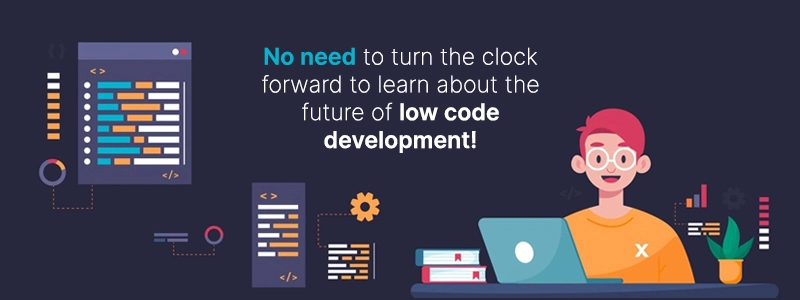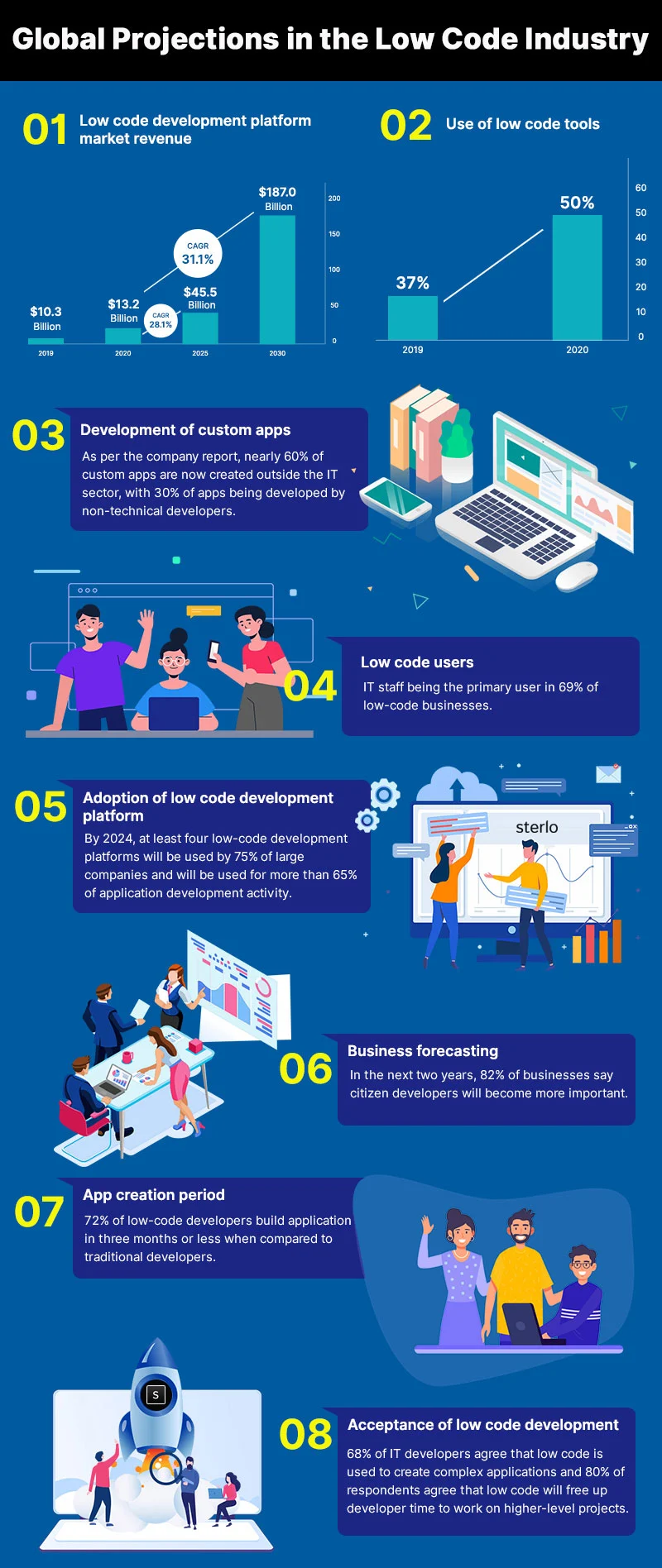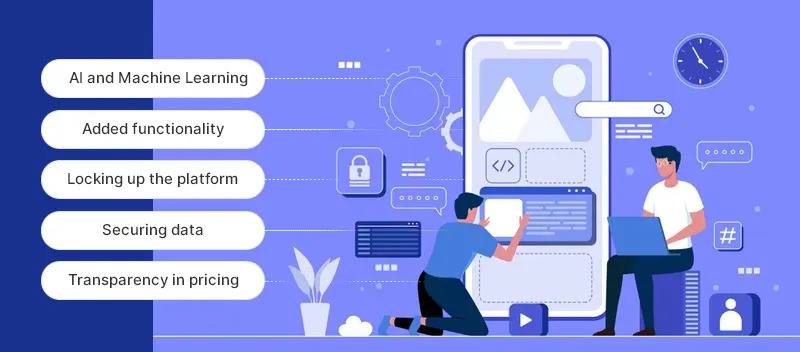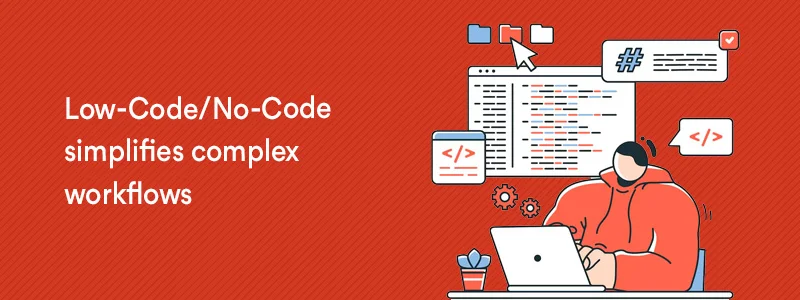
Learn about the facts of a codeless future and turn your projects better
Is low-code the future of mobile app development?
Companies that adopt custom apps have a reliable, simple way to execute daily business activities from the moment they are introduced. They no longer have to rely on lengthy paper trails, intricate spreadsheets, and manual data input to get information. As a result, custom app development transformed the way people do business. Low-code platforms have become the preferred option.
If you want to get a quick result, you won’t rely on apps developed through lengthy coding. Even if you aren’t a developer, low-code platforms enable you to create apps. To create and deploy apps, companies no longer need to rely on technical developers or engineers.
The major advantages of low-code development over traditional development are that it speeds up the design and delivery of apps and opens up the app development pool to non-technical developers or business people. Skilled developers can work smarter and quicker using low-code because they aren’t bound by repetitious coding. Instead, they may construct everything using their development abilities, leaving the low-code platform to do the heavy lifting.
The COVID-19 outbreak showed the advantages of low-code mobile app development platforms, especially in terms of cost savings. For many businesses, low-code development has proven to be a viable option.
Unleashed fact of the low code development market
The low-code development platform market is expected to expand in response to the growing demand for software automation and creative applications around the world. Similarly, the low cost of production and ease of implementation is said to be propelling the low-code development platform market forward.
The demand for low-code development platforms is projected to rise from USD 4.32 billion in 2017 to USD 27.23 billion by 2022, at a Compound Annual Growth Rate (CAGR) of 44.49% during the forecast period.
Between 2019 and 2021, the market is expected to experience some of its fastest-growing. Low-code apps were used or planned to be used by 37% of developers in 2019. This is projected to increase to more than 50% by mid-2020.
According to companies report, nearly 60% of all custom apps are now developed outside the IT department. Furthermore, employees with little to no professional development expertise are responsible for 30% of them. However, skilled IT employees continue to drive the majority of development, with 69% of businesses declaring that IT staff are the primary users using the low code.
According to Gartner, “By 2024, at least four low-code development platforms will be used by 75% of large companies for both IT application development and citizen development initiatives”.
Today’s low-code platforms are becoming more intuitive with each update because the machine learning field itself is growing. We can expect to see platforms that create apps based on voice commands in less than five years due to the rapid development.
Gartner estimates that “by 2024, low-code application development will be responsible for more than 65% of application development activity.”
Citizen developers–business professionals with little to no coding experience–are becoming increasingly valuable to 82% of companies. 72% of low-code developers build apps in three months or less, while traditional developers take six months or even years to create apps.
According to 68% of IT developers, low-code architecture is feasible for mission-critical applications, and 80% of respondents agree that using low-code allows developers to focus on higher-level projects.
Where low code developments are headed in the next ten years

Low-code improves IT’s ability to satisfy business application demand, and sterlo takes it a step further by providing a platform that meets the development needs of professional developers while also bringing in business domain experts.
Next stage of low code amalgamation
Low code platforms are advancing rapidly, but they also need to evolve in terms of accessibility, lock-in, pricing, and product communities.

AI and Machine Learning: Low-code currently makes use of AI to assist users with suggestions, Google AI features, and chatbots. Building consumer-grade software needs these technologies.
Added functionality: Today’s low-code platforms are intended mainly for internal use. They haven’t yet grown to the point that they can easily produce a good-looking consumer-facing app that can scale and evolve over time. It’s starting to improve, though.
Locking up the platform: One of the most significant drawbacks of using a low-code platform is being trapped in a solution. If you want to leave the platform, you have to rewrite your app from the ground up. Improved data and asset migration capabilities would help to reduce the risk of adoption.
Securing data: There is a lot to resolve between data issues, shadow production, and a lack of auditing. Inexperienced users can easily build an insecure solution that exposes user data or worse.
Transparency in pricing: The true cost of these platforms cannot be predicted in the long run. Pricing will continue to be a roadblock until businesses have a better understanding of long-term costs.
But the sterlo low code platform offers advanced features such as:
Everyone on your team can visually build apps without vendor lock-in and third-party dependencies, download source code, and do it all with only developer license costs.
Launch your concept faster, create mobile apps more quickly, get customer reviews faster, and develop your company more effectively with your business expertise and our open-source, low-code platform.
Kickstart your future innovation with sterlo!
sterlo low code mobile app development platform helps you to enhance business agility, solve business challenges and innovate within your organization very quickly.


